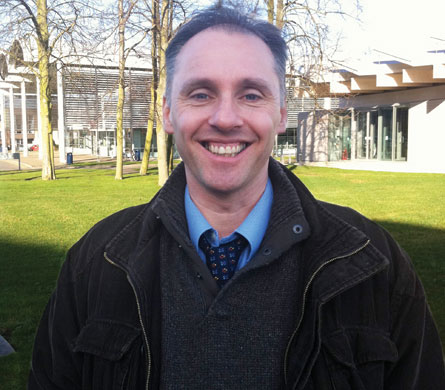Getting the best out of people
Dr Steve Jarvis works at the School of Engineering at the UK's Cranfield University, where as an expert in civil aviation safety, he teaches, among other courses, human factors and safety assessment in aeronautics
How did you get into aviation?
Airfix kits and balsa wood initially. I first worked at BAe Dynamics, where I occasionally assisted with running mathematical models. Short-lived non-aviation careers followed, including school science teaching, psychology lecturing, postgrad research and computer programming. Private flying always consumed my leisure time and I realised 10 years too late that aviation had to be part of any career.
 |
|---|
Jarvis: still pushing to learn more |
What led you to human factors?
By the time I heard of human factors I had a background in human sciences and a growing fascination with my own vulnerability to error, particularly in my flying. One day as a postgrad researcher (in group psychology) I stumbled upon a reference to a mouth-watering discipline calling itself aviation psychology.
Some luck in another business venture allowed me to drop everything and study full-time again, at Cranfield.
More than a decade on I am still as fascinated as I was then and still push myself to learn more; recently I combined two years of leave to complete a Boeing 737 type-rating with Air New Zealand. The more I learn, the more I realise I still have to learn.
What are your responsibilities at Cranfield?
I practise human factors within industry (airlines, regulators, etc) and I lecture human factors, mainly on our MSc course (human factors and safety assessment in aeronautics), which I have directed for six years.
Describe a typical week?
There are two - one as a lecturer and one as a practitioner. As a lecturer, I spend the weekend revising my lectures because my MSc students are sharp and varied, and they'll catch me out.
I might be lecturing for the morning on flightdeck display design for optimal human performance, while in the afternoon the students do group work, designing the primary displays for a unique airborne vehicle.
The group with two Airbus captains produces a remarkably "standard" looking display, whereas the air trafficker and the psychologist have come up with something really outside the box.
As a practitioner, I might start the week in a simulator with a training manager pointing out to me what happened in a recent incident, where the crew made a "strange decision" during a missed approach. It becomes clear that instigating further training in decision making is not the solution, despite the company response. The go-around procedure is unintuitive and the chart is unergonomic. Interviewing pilots indicates that this incident is common but usually unreported. The problem is more about the written procedure and the way pilots are interpreting the chart.
The training manager agrees and we put in place tests for trial procedures. Three months later, data show the crews are managing that procedure far better, and there was no need for the extra decision training.
Your most demanding project?
A review of RNAV operations for a busy commuter airline, which began snowballing into many areas. My colleague Dr Matt Ebbatson and I worked 24/7; simulator trials, jump-seat observations, visiting other agencies, and burning the midnight oil over the mass of analysis.
Which human factor issue most needs study?
Throughout the 1970s Hollywood stars averted air disasters though gritted teeth and brute force. However, in the real world accident trends were becoming much more subtle; in 1972 Eastern FLT 401 flew itself into the Everglades after an automation mode change went unnoticed.
Automation (the autopiloter) has had real safety benefits, but there are downsides that we have yet to master and these still turn up regularly in accident and incident reports.
Source: Flight International



















